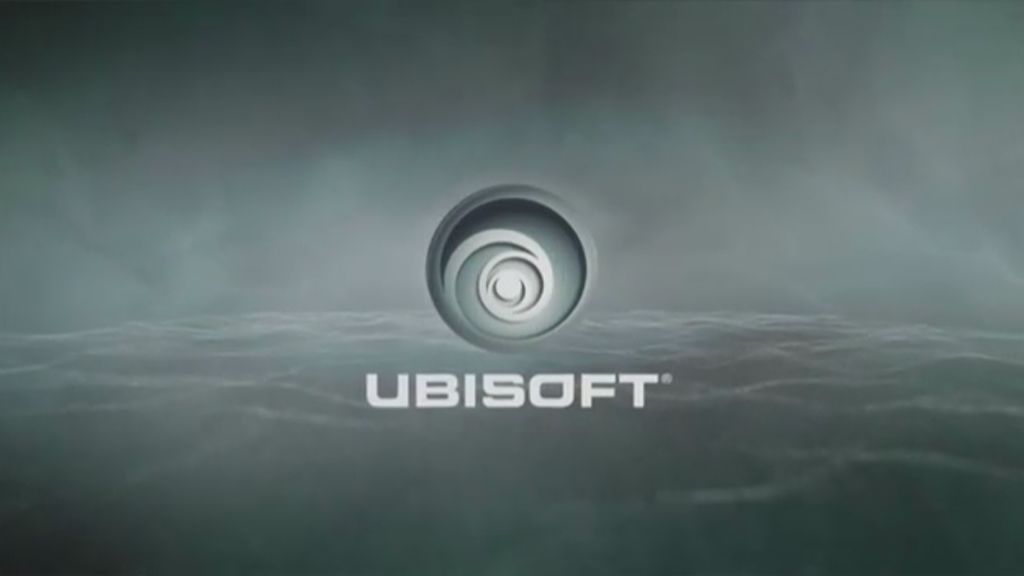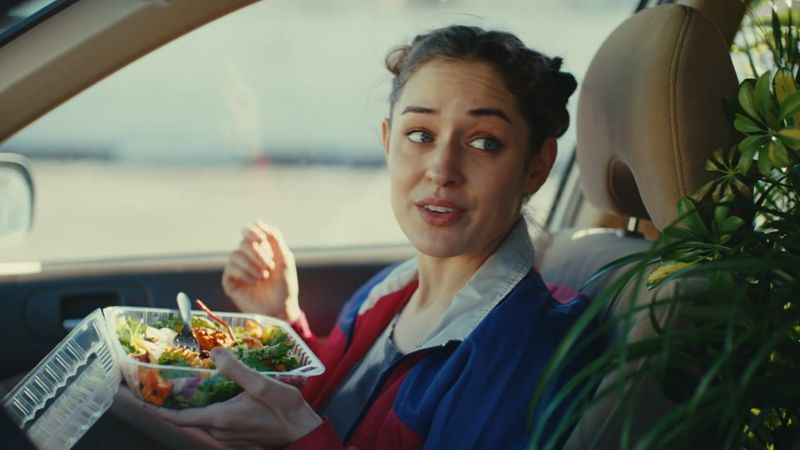Sid Lee, Stink & MPC Talk Assassin's Creed
From 30 metres below sea to the top of a mast, agency, production & VFX house talk about their epic trailer.
Credits
powered by
-
- Production Company Stink Films Paris
-
-
-
Unlock full credits and more with a Source + shots membership.
Credits
powered by
- Production Company Stink Films Paris
- Art Director Martin Westberg
- Director Adam Berg
- VFX Supervisor Franck Lambertz
- VFX Supervisor
- VFX

Credits
powered by
- Production Company Stink Films Paris
- Art Director Martin Westberg
- Director Adam Berg
- VFX Supervisor Franck Lambertz
- VFX Supervisor
- VFX
The new live action Assassin’s Creed trailer from Sid Lee that we broke earlier this week opens at 30 metres below sea level. Rising up, through the levels of a pirate ship, the piece seamlessly travels, dropping in on various fight sequences and stunt action before reaching the top of a mast for a final epic panoramic view out to sea.
It’s safe to say, it’s an epic film directed by Adam Berg, and here, the creative team behind the work join Stink and MPC London’s VFX talent to tell us what went into the project from pre-production to post, and how Adam Berg’s skill and experience brought it all together. Art director, Martin Westberg, Sylvaine Mella, executive producer and VFX supervisor, Franck Lambertz, speak to shots…
How did you come up with the idea for the film, to show the battle from multiple angles, viewpoints and levels with narration?
The initial brief was to respect and reinforce Ubisoft’s dedication to make Assassin's Creed 4: Black Flag a true, vivid representation of the golden age of piracy. Further, we were to underline the new, less heroic, darker main character Edward Kenway, and the much bigger more open and free world that players are presented with in AC4BF, compared to previous games in the series.
We looked for an iconic scene from the game and time that we could use as the base for a metaphor for what we wanted to tell, and the multiple levels and ambiances of a ship in battle at sea captured our imagination, and we strived to create an intense ride of moods and emotions.
Why did you choose live action this time round as opposed to a full CGI spot?
We felt that the story of the real golden age of piracy and the ideals and motives present there was not constrained to the game or that time only but had a place in our everyday society, even today. We took the opportunity with Ubisoft to expand the AC4BF saga to become "real" for a moment, giving the authentic struggle portrayed in the game a merit of having actually taken place in the Caribbean, with real humans both suffering and prevailing.
Where do you start in approaching such a big production and were you always confident of pulling it off?
The first draft of the script was created early on in the creative process as a centrepiece of our campaign. As more people, and finally Adam Berg, joined the discussion to take it from paper to the screen, there was a strong conviction that we had a very powerful piece on our hands.
Dedication was born to make the script word-by-word-real, however hard and challenging the road would be. There were major challenges just in terms of scale and complexity of the set and filming. And we knew that the shoot would be both tense. But the mix of talent, long experience of key team members and belief in the final product gave the project a focus and fuel to be realised.
What did you find most challenging in terms of realising your ideas?
As each scene was tailored to convey a set of emotions and metaphors, taming real life elements like underwater acting, rushing water, live fire, explosions and human emotions in tight, controlled shots and get them to work in harmony was a big challenge. But again, talent in each individual department and understanding of what needed to be delivered meant that the pieces came together into a unified flow.
Are there any interesting memories from the casting stages you remember or anything that happened throughout the production stages?
The most vivid memory for us is the actor and filming of the opening shot. In the gigantic, steaming 35-degree water tank studio, with a crew of 60 over the water, during several draining hours one of our actors and dive stuntmen floated with eyes closed in front of the camera. He conserved energy by staying still, supplied with oxygen and watched over by a dedicated dive team. Finally the ballet of motion control camera, light, clothing and grace of him floating down into the depths finally came together, and the seemingly simplest but at the same time key shots of the film was done.
And why did you think Adam was the right man to direct the spot?
As the outlines of the film became clear, it was clear that we needed a director with the drive and ability to tell many stories in one picture. With experience in directing with unusual camera restrictions and an unparalleled attention to detail, not only in scenography but individual movements, expressions and sources of light, Adam Berg would be able to make a film where hundreds of elements needed to work together and at the same time deliver several narratives, come true.
Sylvaine Mella, Stink Paris executive producer continues...
What initially appealed to you about the job?
Its epic quality, the storytelling and the period piece.
What was the collaboration process like with MPC on the pre-vis?
It was very interesting to go in depth into the film lenses, angles, movements, duration of each shot prior to the actual shoot.
What was it like with all those stuntmen on set at once?
It was pretty intense. Every move had to be carefully choreographed to fit perfectly into the camera moves envisioned. We showed the pre-vis to the stunt co-ordinator and then discussed the actions, the weapons, the gun explosions. Then lot of rehearsals, first in a gym next to the studio and then on the boat, but the real thrill was to see it finally happening with the costumes, the blood, the wounds and other sfx and the Mocap.
Was it hard to imagine what the guys at MPC were going to add after, and what was it like seeing it all come together in post?
We tried to shoot a lot in camera, also the preparation with MPC and the presence of Franck on the shoot made it all quite seamless.
Franck Lambertz, VFX supervisor at MPC continues...
When a big exciting job like this comes in, what are your initial thoughts?
As soon as we received the script from Adam Berg and Stink we were very intrigued. We could see its potential straight away and knew it would be an epic film. We were also aware of the challenges. How could we keep this big piece of VFX inside a reasonable time frame and budget?
But no matter the challenges, we knew with the team we had it was going to be fantastic. From the very beginning in pre-production we worked closely with Ben Crocker (Adam’s producer at Stink) on the look of each shot. We agreed to approach the shots by maximising the in-camera footage, and enhancing it with VFX.
Of course, there were also some of the more epic scenes, especially the panoramic end shot that would require all the VFX techniques in the book.
And tell us about the importance of being involved from the early stages?
It is imperative to be involved from the beginning of the project. In a piece like this one, the VFX are not a part plug at the end of the film. They need to be totally integrated throughout the story telling and planned from the very beginning for maximum effect.
We started out asking ourselves many questions: How would we make the all the transitions join in a seamless way? How much would we try to shoot in camera to get the imperceptible randomness that makes a take unique? How deep do we want the background to be? How much, and how often would it take priority over the foreground?
What was the most challenging part of the job from a VFX point of view?
Water FX is always challenging. It requires long hours of simulation, and we didn't have much excess time. Once we used Houdini, the shots came rapidly with realistic results. But it wasn’t the only VFX challenge we had to pass through… each section required a lot of 2D love to make it work. The aim of this work was to make the VFX imperceptible to the viewer.
The pre-vis was obviously very important for the success of the whole shoot and final result; tell us about that aspect and how you went about approaching it…
It is always ideal to perform a camera move in a seamless way. But it is difficult to visualise it from nothing, and very hazardous to break it down into sections blindly. The timing is the most difficult parameter to judge.
We had to work out how long it would take a camera to travel from 30m deep in water to the top of the mast. The last thing we wanted was to have the camera jumping from floor to floor.
We started building all the pieces and a camera rig. From this scene we tried different options in terms of movements and camera timing. We decided rapidly to adapt the boat model a little. We reduced the hull and the mast, removing a bit of the unnecessary moments in the story.
In the end, it was a good guide for the shoot, but we adjusted it slightly on location. With Mathias Montero (DOP) and Adam, we adapted the path to capture the best of the performance.
And what was it like to team up with Adam Berg and the agency to realise their vision?
Working with Adam is always very great. He has a global vision of the full craft. During the VFX and post-production, he worked with us to propose what we thought was the best route for each shot, but he was always very involved and kept control of the process.
I particularly liked how he would be engrossed in the tiniest details, while never forgetting the global vision of the story.
How much creative freedom did the team at MPC have on the job?
We listened to Adams feedback throughout; making sure his vision for the story was never altered. He always made it clear about what he liked, and also what he didn’t want.
Outside that, we had a real creative freedom. We were lucky we understood his requests quickly, and our time was used to enhance shots, rather than redo a job already done.
Connections
powered by
- Agency Sid Lee Paris
- Production Stink Films Paris
- Director Adam Berg
- VFX MPC (The Moving Picture Company)
- VFX Supervisor Franck Lambertz
Unlock this information and more with a Source membership.












